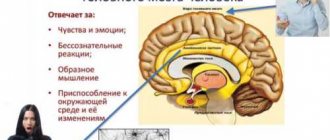No other aspect of human behavior is as complex or as varied as romantic courtship and pair formation. And although people's sexual strategies differ, the basic mechanisms of flirting and showing love have many patterns determined by biology, natural selection and evolution. We understand how nature dictates the romantic relationships of people. Although partnership in the modern world has taken on a variety of forms, in the article we will consider the relationship between a man and a woman: this is not a question of the presence or absence of political correctness, but a purely biological aspect.
The story of a relationship begins the moment a man and a woman are within reach of each other: it's time to start flirting.
While some women might win a gold medal in a flirting competition (if such a thing existed) and others have a hard time understanding how to act and react, the reality is that basic flirting is the same for all women. It starts with a smile, then the woman quickly raises her eyebrows, opening her eyes wide to get a better look at her potential partner. If all is well, the next movement will be lowering the eyelids, tilting the head down and to the side, and looking away. Often a woman will cover her face with her hands, giggling nervously - and this gesture is so characteristic of humans that the German ethologist Eibl-Eibesfeldt even considered it innate, a unique trick of the human female that signals sexual interest.
Men also have their own pattern: they use courtship tactics similar to those observed in other species. For example, the body position popularly called the "wheel chest" is part of an underlying postural message that symbolizes the male's dominance as the most promising male. Cods stick out their heads and pelvic fins, snakes, frogs and toads swell their bodies, antelopes roll over to emphasize their size, gorillas pound their chests, and men simply bulge their chests forward.
Gaze
Perhaps the gaze is the most striking detail in the human courtship process. In Western cultures, where eye contact between men and women is allowed, it is common to stare at potential partners for two to three seconds. As you know, if at this moment the pupils begin to dilate, we can talk about extreme interest. After such a quick assessment, the person lowers his eyelids and looks away.
From this point of view, it is interesting to look at the custom of wearing a veil and using it in a wedding ceremony, since visual contact can have an immediate effect. It triggers the primitive part of the human brain, activating one of two basic signals - time to approach or retreat. It is impossible to ignore another person’s gaze fixed on you; we always respond: either we smile and start a conversation, or we look away and step aside.
During courtship, baboons look at each other, just like people: they may have left the human evolutionary tree more than 19 million years ago, but they took this similarity in the mechanism of courtship with them.
Moving in unison
Synchronizing body movements is the final and most intriguing component of basic flirting. As potential partners begin to feel more comfortable, they turn toward each other until their shoulders are aligned and they are face to face. After a while, the man and woman move in tandem, repeating each other's movements: when he crosses his legs, she sits cross-legged, when she smooths her hair, he straightens his.
The formation of the mirroring mechanism begins in infancy. By the second day of life, the newborn begins to synchronize his body movements with the rhythmic patterns of the human voice. When people are comfortable with each other, they form their own rhythm of movement, which is typical for many animals. Before copulation, chimpanzees sway from side to side, looking into each other's eyes, and cats walk in a circle. From bears to beetles, couples form rhythmic rituals to express their loving intentions.
Personality traits are important
Research shows that positive, kind people tend to be attractive to others.
An experiment was conducted: a group of people were asked to evaluate several photographs of strangers. Positive descriptions of the people depicted were then added to the photos, and participants again had to rate them. Photos with positive descriptions received significantly more positive feedback from participants. This suggests that certain personality traits, such as kindness, generosity or generosity, also contribute significantly to the attractiveness of their owner.
The reply is in process
Human courtship has much in common with courtship among “lower” animals. Usually people groom each other slowly: caution in this process is also characteristic of, for example, spiders.
The reason is simple: men and women who are too aggressive at the beginning of courtship often suffer the unpleasant consequences of their impulsiveness. If you get too close, touch the person too soon, or talk too much, you'll likely get rejected. Human courtship works on the principle of mutual communication: at each stage of the ritual, each partner must respond correctly to the manifestations of the second person. Which, in turn, must wait for this response before proceeding with the next steps. If you do not follow the ritual, courtship will not succeed.
Why one is drawn to a person: psychology
At one time, the founder of modern psychology, S. Freud, tested in his own practice the assumption that a girl is subconsciously drawn to a man who resembles her own father, and boys are drawn to a girl who is similar (psychologically) to her mother.
Physical signals can be inconsistent because not everything is cause and effect, and it is important to evaluate the verbal with the nonverbal together for good interpretation. When it comes to the body language of attraction, we must distinguish between two important factors: the position of the echo, which is when another person takes the same position as one, and the movement of the echo, which is when the other person copies the movement of one.
Study: Body Language Analysis of Attraction
These two aspects would be important as the researchers suggest that individual movements are not important, but movement patterns are as they would be the ones that tell us the story of attraction between two people. There have been many studies on body language related to attraction to see what signs can show it.
Source: Fisher, Helen: This is the first delicate, carefree ecstasy. Men only on models and women only on well-trained men? Attractiveness research is a broad field that also includes the billion-dollar media, fitness, and cosmetics industries. But attractiveness is not the same thing as beauty, first of all, it also includes the basic characteristics of a person.
We are more beautiful together, researchers have discovered in various experiments. First, study subjects automatically rated a person in a photo with several “real” faces on top of each other to be more attractive. On the other hand, the cheerleader effect, for example, means that people look more attractive in a group than when viewed individually.
At the same time, people are not able to see this similarity, but intuitively strive to find a partner who matches the parent’s psychotype. It is not without reason that acquaintances often note how much the bride resembles the groom’s mother in her youth.
Opposites Attract
Another idea explains attraction by the desire to compensate for one’s own shortcomings with the strengths of a partner. And having met an object that has the necessary qualities, a person experiences tender feelings for him, called the state of falling in love.
In this case, we'll focus on a study published in the Journal of Nonverbal Behavior that analyzed the behavior of two people who felt mutual attraction, paying particular attention to the body language of both people.
If we focus on the material that was obtained for body language analysis, we specifically analyzed the movements of the head, shoulders, arms, arms, torso and legs.
Contrary to what was seen in previous studies, attraction was predicted by synchronization patterns rather than simple imitation of body language. From the results, rhythmic structures of synchronized movements were obtained, patterns of body movement that people adopted.
However, the above-mentioned studies usually focus only on external ones. The appeal, however, involves much more. Carl Grammer talks about the nine universal pillars of attractiveness: youth, symmetry, skin and hair condition, movement, smell, voice, height, hormonal markers and mediocrity.
The smell of our colleague is especially important in the matter of attractiveness. Firstly, deodorant or perfume plays a decisive role, but your own body odor. Because every body reacts differently to stress, poor diet, anxiety and other environmental influences, and the skin removes these different substances through the pores.
Love in return
Seeing special attention from a man to his person, a woman feels most desirable and perfect for this man. An unconscious desire arises to answer him in kind, the girl is drawn to the guy. The result is a mutual feeling. The same is true in the reverse situation: a man falls in love with a lady who adores him.
As in previous studies, this study found that it was the woman who typically initiated and supervised these samples. And, of course, the more interested a woman became, the more complex her body language movement patterns were. So, in conclusion, potential couples prove their compatibility non-verbally by building symphonies of body language, with women being the main drivers. Given the complexity of this description, it is quite clear why synchronicity of movement is never commented on in fashion magazines, although it is probably the closest thing to the truth about how non-verbal attraction is discussed.
Human nature makes him attractive. However, the appeal goes beyond Professor Grammer's nine pillars. Although we are easily impressed by external features, it is primarily the essence of a person that makes him appear attractive as a whole - although sometimes only at first glance. Character, humor, naturalness, charisma are important. But well-groomed impressions and intelligence are important factors. Intelligence does not mean a classical level of education. Rather, it is an opportunity to have a stimulating and entertaining conversation that speaks to us.
It is impossible to say that one or another theory is the most correct, therefore each of them has the right to exist.
Perhaps our article Why men love women will also help you.
Attention, TODAY only!
Smell
Every person smells a little differently: our scent is as distinctive as our voice or fingerprints. Newborns are able to recognize their mother by smell, and we unconsciously choose partners by smell. Both men and women have apocrine glands in the armpits, around the nipples and in the groin, which become active during puberty - they create that unique smell that is so important for successful mating.
Source: artisteer / istockphoto.com
This moment plays a huge role primarily for women, who smell better than men, and the unconscious craving for “male smell” intensifies in human females during ovulation. Thus, the right human smell, heard at the right moment, can provoke a strong sexual desire.
Fading feelings
Alas, over time, the attraction passes and any, even the brightest, passion turns into a “feeling of neutrality.” As a rule, this happens in the period from 18 months to three years, and another important condition for the extinction of sexual interest is... regularity. As soon as a couple begins to see each other regularly, live together and have sex, alas, they embark on a slippery path of fading emotions. Presumably, this is due to the physiology of the brain: it is simply not able to forever maintain a suddenly appeared feeling of romantic bliss, it is too energy-consuming. So, rekindling the extinguished fire of emotions is not so easy: it contradicts the natural biological flow of things, forcing people to fight nature.
Chemistry of a long-term relationship
Oxytocin and vasopressin are hormones of fidelity and affection that are responsible for the formation of true love. They are actively developed during regular sexual relationships, which bring pleasure to both partners, gradually strengthening their connection on a physical and emotional level. It is for this reason that some couples separate after the first sex, while others, on the contrary, become stronger in their feelings - if the first close contact does not provoke the release of oxytocin, the partners, as a rule, do not have the desire to repeat it again.
The action of these components is always associated with interaction with other people. Typically, endorphin stimulates an internal feeling of happiness and does not in any way change the attitude towards another person. And changes in the level of oxytocin and vasopressin affect precisely the attitude towards people, especially those closest and loved ones.
Oxytocin acts as the “hormonal glue” in relationships. It increases the level of trust in a partner, dulls the feeling of anxiety around him, makes us more sensitive and gentle. For example, maternal and paternal instincts are also activated under the influence of this hormone.
Scientists conducted an experiment and injected oxytocin into the brain of a virgin vole rat, after which it began to experience a strong interest in other people's pups and take maternal care of them.
The fidelity of spouses in marriage is also the result of the activity of oxytocin, which is most pronounced in men. Perhaps in the future, humanity will come up with a special vaccine that will be used to treat unfaithful husbands and turn them into exemplary family men.
Levels of this hormone can be increased naturally through pregnancy or sex, and in women they peak during orgasm.
It has been proven that men with high levels of oxytocin become kinder, more gentle and more attentive to their halves.
Vasopressin is similar to oxytocin in chemical composition, but it has a greater effect on representatives of the stronger half of humanity. Under the influence of vasopressin, a man turns into a real hunter and protector; he wants to completely possess his woman, is jealous of other males and is afraid of losing her.
Vasopressin is directly involved in ejaculation and erection; it is also responsible for dividing people into “friends” and “strangers”. It is because of this hormone that it can be difficult for men to love and accept other people's children, even when they truly love their mother.
The increased production of oxytocin and vasopressin forms in us a stable sexual and emotional unity with our partner, suppresses the desire to cheat and, conversely, causes the desire to make our lover the happiest.
Harems and monogamy
Only 16% of the 853 known human cultures prescribe monogyny, a situation in which a man is allowed only one wife. A whopping 84% of all human societies allow a man to have more than one wife at a time.
Men seek polygyny to spread their genes, while women join harems to increase resources and ensure the survival of their children
Yes, thanks to the fact that once upon a time our male ancestors strove for polygamy, and our female ancestors agreed to life in a harem, man survived as a species. However (and this may seem surprising in the context of the above) man is monogamous.
In the vast majority of societies where polygamy is permitted, only 5–10% of men actually have multiple wives at the same time. The reason for the tendency towards monogamy lies in the fact that people almost never focus on procreation as seriously as animals do. Everything happens more naturally with us. We're flirting. We feel attracted. We fall in love. We're getting married. And the vast majority of us only marry one person at a time. So the formation of a pair can be considered a clear sign of humans as a species.
Treason
However, even though we flirt with, fall in love with, and marry one particular person, people also tend to be sexually unfaithful to each other. So even if in most cases cheating is considered to be something immoral, people continue to cheat despite feelings of guilt, risking family, friends, reputation and nerve cells.
Why? We can try to explain this from an evolutionary point of view: if a man has two children with the same woman, we can say that he does not contribute much genetic diversity to the species. But if he gets involved with more women and accidentally has a couple more children, he doubles his investment in the next generation. It has been observed that those men who seek variety on the side also tend to have more children. Well, since the number of children a woman can give birth to in her lifetime is limited, women are biologically less motivated to seek out new opportunities.
A man asks you out on real dates
Besides the fact that he just hangs out with you during the day, and not just during the “peak hours” of sex, does he ask you out on real dates? Or is he the king of chat?
There is a difference between a date and just hanging out. Simple communication requires very little energy and often leads to sex. Of course, a date can also end in sex, but for it you need to at least make plans and spend money. The effort he puts in shows he cares. This is a sign of an emotional connection between you.
Parting
From the tundras of Siberia to the jungles of the Amazon, people view divorce as something to be regretted, although sometimes necessary. Typically, each society has its own specific social or legal procedures for divorce, although not all nations tend to make divorce a moral issue. Divorce tends to occur early in marriage, peaking around the fourth year after marriage, followed by a gradual decline in divorce rates as the length of marriage increases.
Why do people get divorced? Arguments, insensitive statements, inability to listen, bad habits, sexual rejection - the reasons why men or women leave a marriage are as varied as the reasons for entering into it. However, the first on the list of reasons is infidelity, and next is the reluctance or inability of one of the parties to have children. Which, again, can be explained by biology: Darwin suggested that people marry in order to reproduce.
By the way, this assumption is indirectly confirmed by interesting statistics. According to UN data, among the hundreds of millions of people married in 45 countries between 1950 and 1989, 39% of divorces occurred among couples without children under 18, 26% among those with one minor child, 19 % - among couples with two children, 7% - with three, 3% and below - with four or more. That is, the more children a couple gives birth to, the less likely they are to divorce.
Again, from a Darwinian perspective, it is not surprising: couples without children should separate, both people will remarry and probably try again to procreate, securing a genetic future for themselves. Well, couples who give birth to more children become less able to abandon a growing family, including economically, and stay together to raise their common offspring, ensuring survival.











